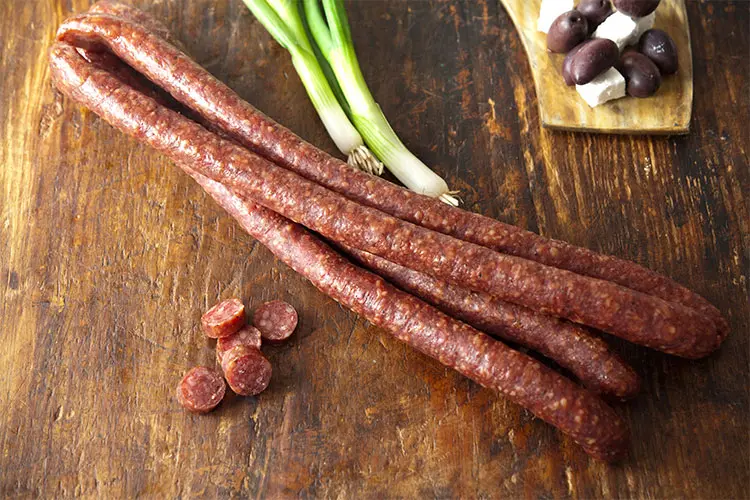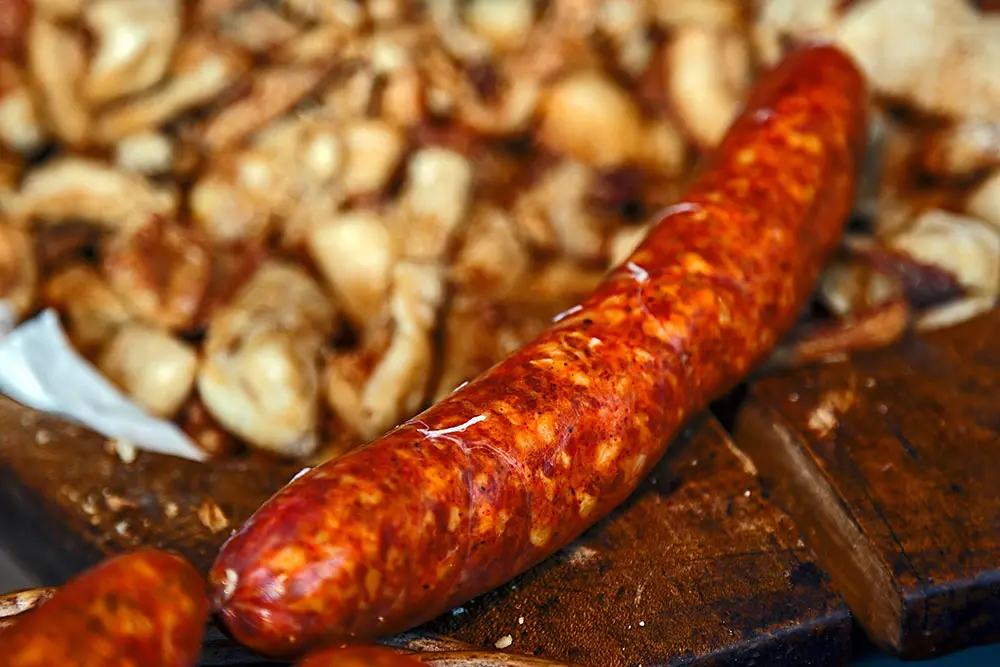When it comes to traditional Romanian cuisine, one cannot ignore the mouthwatering Romanian smoked sausage. Known for its rich flavor and unique smoky taste, this sausage is a staple in Romanian households and a popular choice in local restaurants. In this article, we will delve into the origins of Romanian smoked sausage, its ingredients, and how it is made.
What is Romanian Smoked Sausage?
Romanian smoked sausage, also known as carnati afumati in Romanian, is a type of cured sausage that is heavily seasoned and smoked to perfection. It is made using a combination of pork meat, fat, and various spices, which give it its distinct taste. The sausage is then smoked over burning beechwood chips, adding a smoky flavor that sets it apart from other sausages.

Ingredients
The ingredients used in Romanian smoked sausage are simple yet flavorful. The primary ingredient is pork, including both lean meat and fat. The fat is essential to enhance the texture and juiciness of the sausage. Along with pork, a variety of spices and seasonings are added, such as garlic, black pepper, paprika, coriander, and marjoram. These spices give the sausage its characteristic taste and aroma.
The key ingredients of Romanian smoked sausage are:
- Pork meat
- Pork fat
- Garlic
- Black pepper
- Paprika
- Coriander
- Marjoram
How is Romanian Smoked Sausage Made?
The process of making Romanian smoked sausage involves several steps to ensure its unique taste and texture. Here is a step-by-step guide:
Step 1: Preparing the Meat
The first step is to prepare the pork meat by cutting it into small pieces. The fat is also cut into smaller chunks. Both the meat and fat are then mixed together in a bowl.
Step 2: Adding the Seasonings
Once the meat and fat are mixed, the seasonings are added. Garlic, black pepper, paprika, coriander, and marjoram are all added to the mixture. The spices are mixed thoroughly to ensure an even distribution of flavors.
Step 3: Stuffing the Sausage
After the meat and spices are mixed, the mixture is stuffed into casings, usually made from natural materials such as hog intestines. The casings are tied at regular intervals to form individual sausages.
Step 4: Smoking the Sausage
Once the sausages are formed, they are ready to be smoked. The sausages are traditionally smoked using beechwood chips. The smoking process can take several hours, allowing the sausages to absorb the smoky flavor and develop their unique taste.
Step 5: Curing the Sausage
After smoking, the sausages are left to cure for a specific period, which can vary depending on the desired flavor and texture. This curing process further enhances the taste and allows the flavors to meld together.
Q: Can I use beef instead of pork to make Romanian smoked sausage?
A: While pork is the traditional choice for Romanian smoked sausage, you can experiment with other types of meat, including beef or a combination of meats. However, keep in mind that the taste and texture may differ from the authentic Romanian version.
Q: How long does Romanian smoked sausage last?
A: When stored properly in a cool and dry place, Romanian smoked sausage can last for several weeks. However, it is best consumed within a few days for optimal freshness and flavor.
Q: Can I freeze Romanian smoked sausage?
A: Yes, Romanian smoked sausage can be frozen to prolong its shelf life. Make sure to wrap it tightly in plastic wrap or place it in an airtight container before freezing.
In Conclusion
Romanian smoked sausage is a culinary delight that showcases the rich flavors of Romanian cuisine. Made with a combination of pork meat, fat, and aromatic spices, this sausage is a true delicacy. Whether enjoyed on its own, in a sandwich, or as part of a hearty meal, Romanian smoked sausage is sure to satisfy your taste buds with its smoky and savory goodness.
If you want to know other articles similar to Exploring romanian smoked sausage: origins, ingredients, and making process you can visit the Food category.


Related Articles